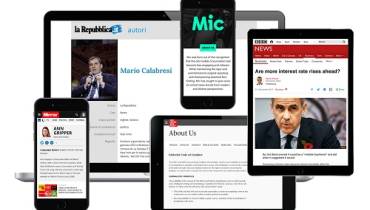How to Know Your Company Has Outgrown Its Office Space

In any business, the watchword is "growth." Everything you're doing in your operation is geared toward expanding your customer base, increasing your market share, adding new revenue streams, or otherwise moving things in both the upward and outward direction.
When a company is working aggressively to grow, the focus is typically on the fiscal signs of growth that we've mentioned above. Somewhere under the radar is the creeping demand for more office space.
Sometimes the growth is so subtle that it could potentially reach crisis level with no apparent warning. Perhaps it is important to evaluate your space regularly before any issues truly arise.
Listen Around You
Think back and envision the first inception of your company. The doors opened and your staff took their seats for the first time. Now, remember what that sounded like.
Was it mostly quiet? Do you hear just the sounds of a couple of phone calls taking place, the sounds of someone walking back to their desk with a fresh mug of coffee, and the quick clatter of a keyboard? Tune in to the sounds of your office now. Is it noticeably louder?
If you’ve added more employees, it more than likely will be. This isn’t a sign of a lack of productivity, but a sign that you’ve added more voices, more keyboards, ringing phones, and pacing feet to the same sized space.
Do you think the increased noise level is distracting? Your staff may think so as well.
Productivity Is Hindered by Waiting
When you began your company, perhaps only four people may have needed access to the single bathroom or the sole office printer. Now that your company is gaining traction, that has since multiplied.
Have you ever had to wait to use the restroom, or found that the printer has begun to break down more often? Did you just put in an order for paper and toner and they are now both already out again? Is it next to impossible to book your constantly utilized conference room?
If your shared spaces and materials are crowded and constantly running out, that could also be a significant indicator.
There are in house solutions you could do; buy a second printer or double up on reams of paper. However, it isn’t feasible to build a bigger bathroom.
Also, it isn’t exactly possible to magic up a second break room, or more conference rooms. You could rearrange, or you could begin a much-needed search for a larger office space.

Improvised Work Stations
Sometimes the need for additional staff will materialize before there is a place to put everyone. In that situation, you've probably cobbled together a desk, chair, and other essentials to set up a worker in a nontraditional location "for the time being."
The problem with that is that there is no permanent solution to your temporary placement. The more of your personnel you have working in spaces that were designated for other purposes, the more likely it is that you are overcrowded.
Converted closets, permanently absconded conference rooms, and even corridors can slowly fill with workers who have nowhere else to go. Are cubicles that were once for a singular person now housing two staff members constantly vying for more elbow room?
At one point in time, were each section of your office neatly designated by each department? Now half of the marketing team is strewn along your office, constantly having to walk halfway across the building to speak to each other.
Is one charismatic member of your sales team answering potential sales calls surrounded by an island of your IT department? When you step back and count up these improvised work areas, you may see that you have slowly outgrown your office.
Enough room to grow is important for a multitude of reasons. No one wants to feel cramped in a space they spend eight hours a day. Nor would a staff member feel like they have no permanent space to settle or they won’t feel like a permanent asset. No member of one team wants to feel like they are isolated from the rest of their department.
At the end of the day, content and comfortable employees truly will be who are creating all that growth you are seeing.
Parking Problems
Sometimes the best indicator of problems on the inside involves looking outward. Generally speaking, parking lots are designed to hold a number of vehicles that is roughly equivalent to the number of people the building is expected to accommodate. When the parking lot is too crowded, the office might be as well.
If you arrive before most workers, watch their parking behavior. If there is a push to arrive early and park near the front, you probably have a parking problem that will support the idea that you are overcrowded indoors as well.
You may also see people parallel parking in the street, using handicapped spaces, or even parking in the grass just because there aren't enough spaces. You could offer a bonus for those who carpool, or you could just find a bigger parking lot.

When It’s Time to Move...
Once you've diagnosed your overcrowding problem, it's time to take action. It’s time to start making lists and delegating tasks.
Once the decision to move has become a concrete one, invite all of your staff to a town hall style meeting. Gauge their interest in relocating, and respect their needs in a new office.
If you are changing locations, see where their limits are. How much farther can they possibly commute, or what are some necessities that they need out of a new space that you may not have considered. This new office is for their growth and benefit, don’t make them feel like the move is a sign for them to move on from your company.
Begin to select a new location for your offices, and then build a plan to relocate. Don’t try and do it all yourself. Your business is succeeding, so clearly your staff are quite competent and reliable.
Have one person help you locate available spaces. Take your HR manager with you on onsite locations. Make sure your space is up to your sales manager’s specifications when they may be bringing in new clients on a daily basis.
Consult IT to make sure there is adequate space for your server room and that the current internet and hardlining needs are going to be met there. Your staff knows what they need to be efficient, make sure you consult them regularly and often.
Anticipate as many of the changes that will need to be made as possible. Submit a change of address with the Postal Service, and notify private shipping companies of your destination. Make sure your clients know your new location as soon as you do.
Set a date for utilities to be transferred so that workers can resume normal operations as quickly as possible after everything is set up. Before you start leasing a new location, make sure all the equipment can be transferred and will work in those locations. If the building is older, make it can take the strain of all the computers and electronics you will be installing.
Use a professional moving company to get everything relocated quickly and efficiently so that you can minimize downtime. You can consult them on how long a move of that size will take so that you can build that into your plan. Make sure you let them take the reins on moving large furniture. You don’t want your staff to accidentally hurt themselves in the process.
Every company wants to see upward momentum, but it sometimes creates overcrowding. The sooner you recognize the signs of overcrowding, the sooner you'll be able to make changes that will minimize the disruption of your growing company's daily work.




















